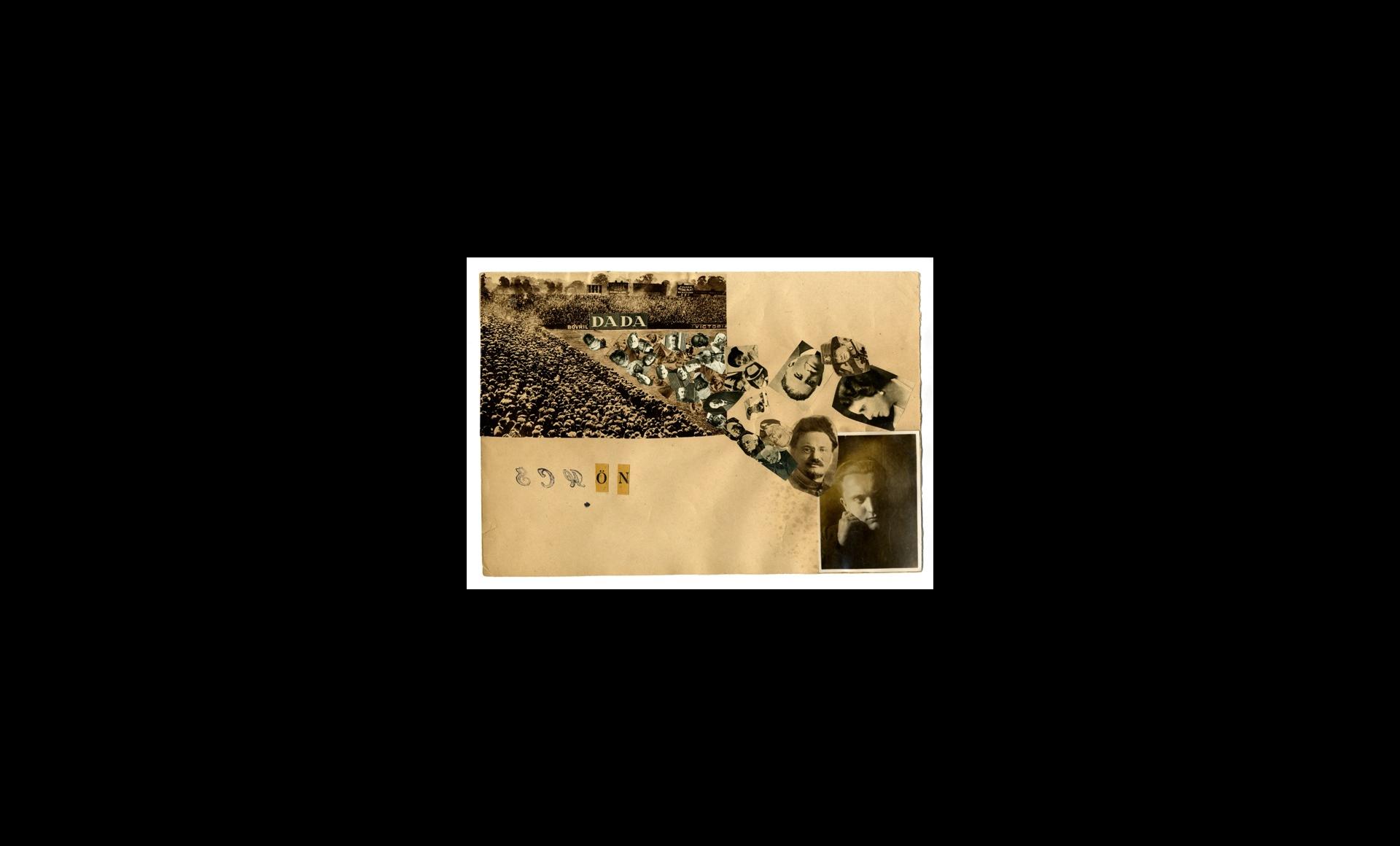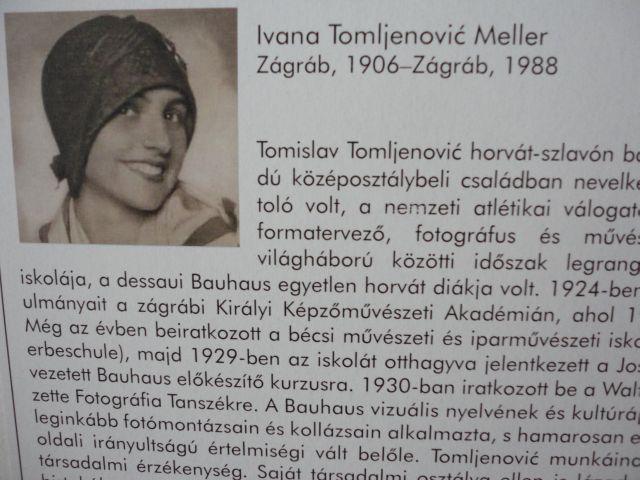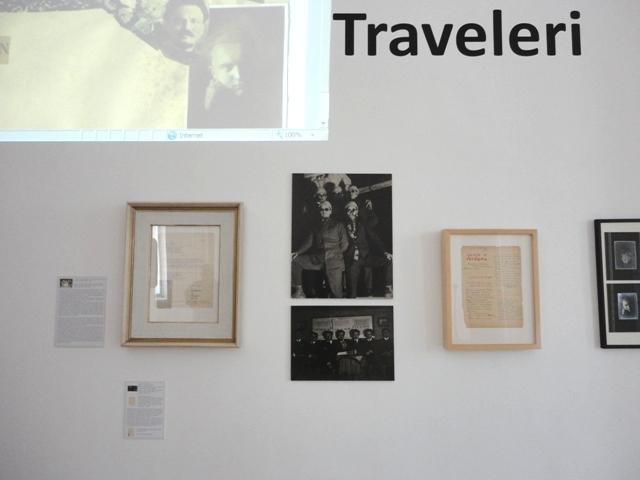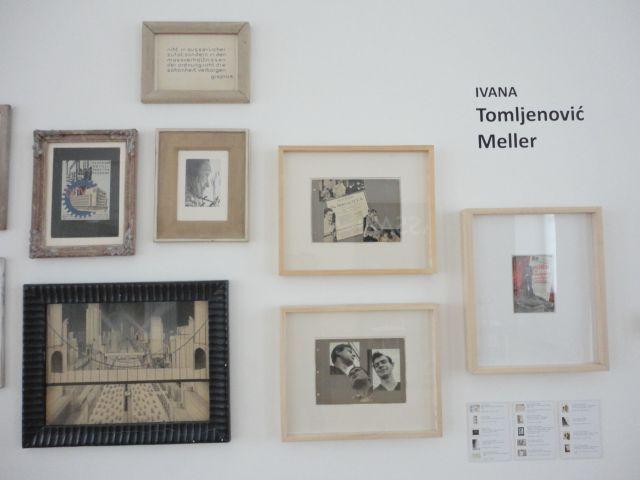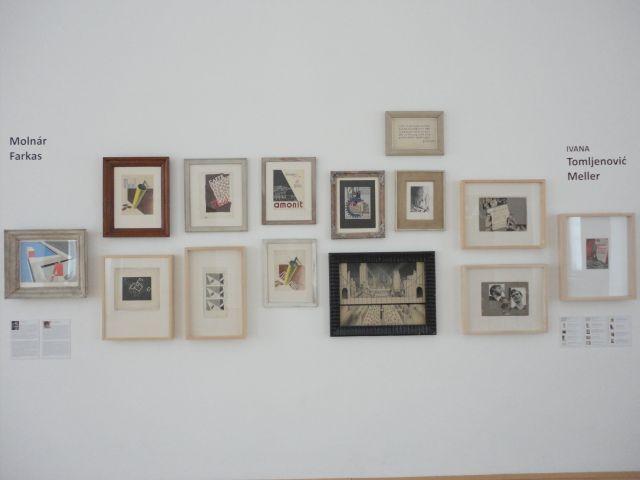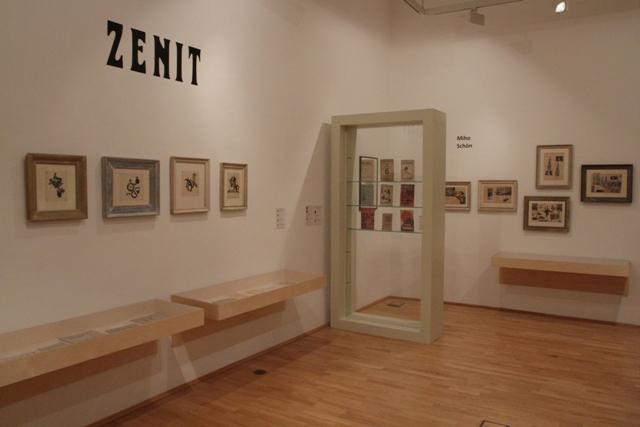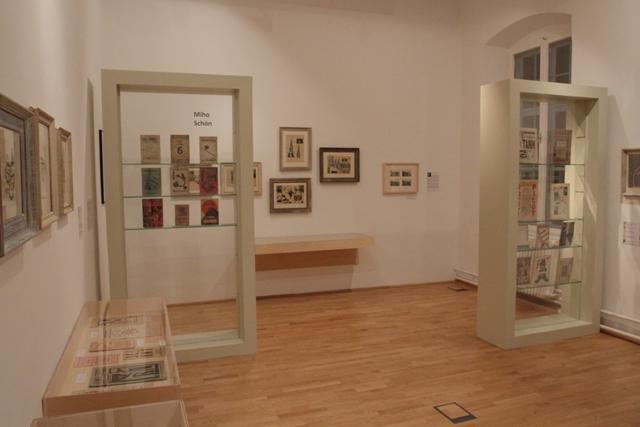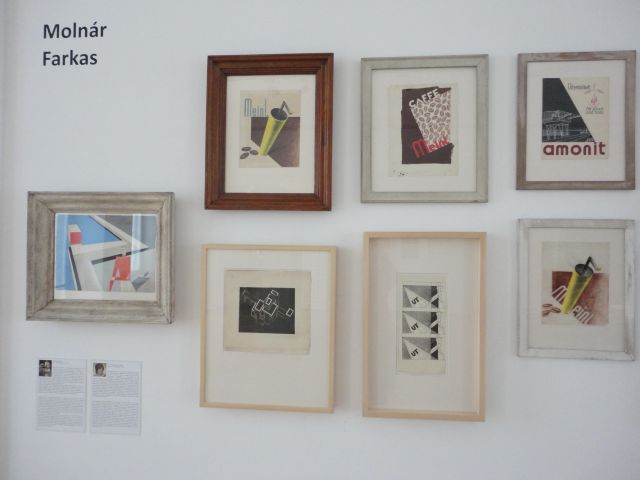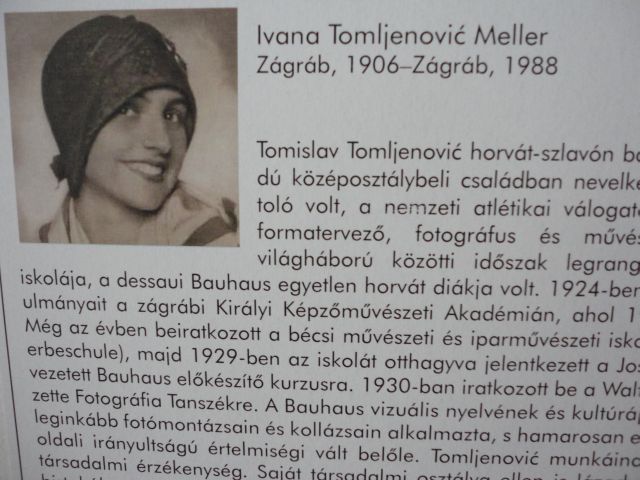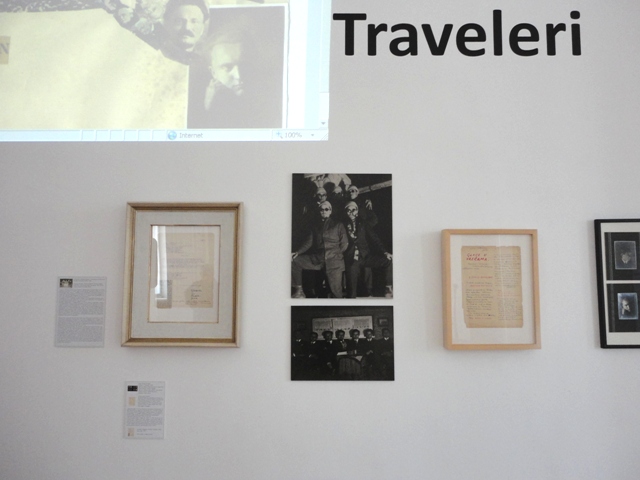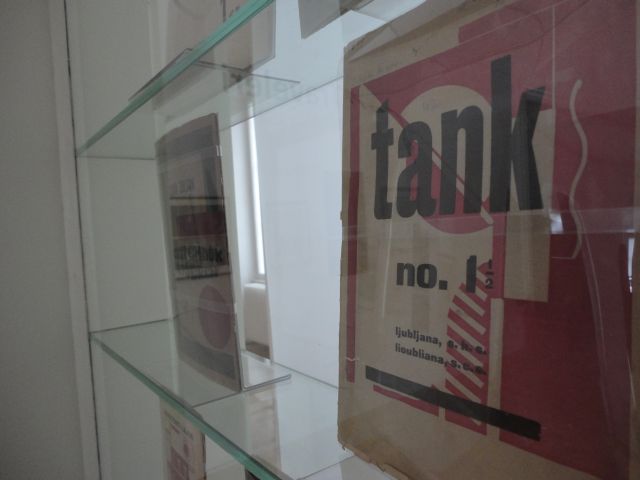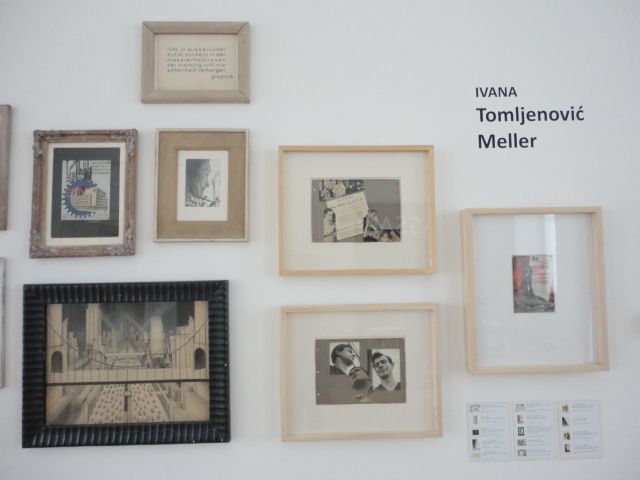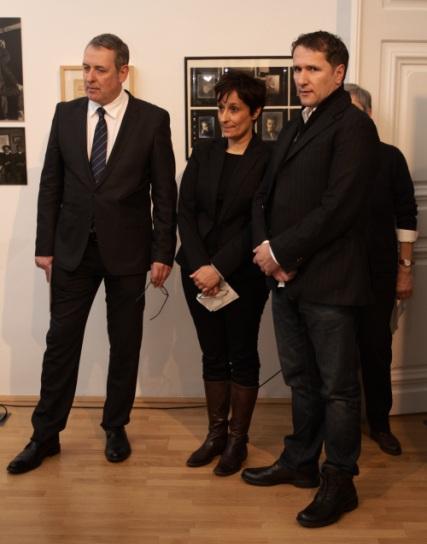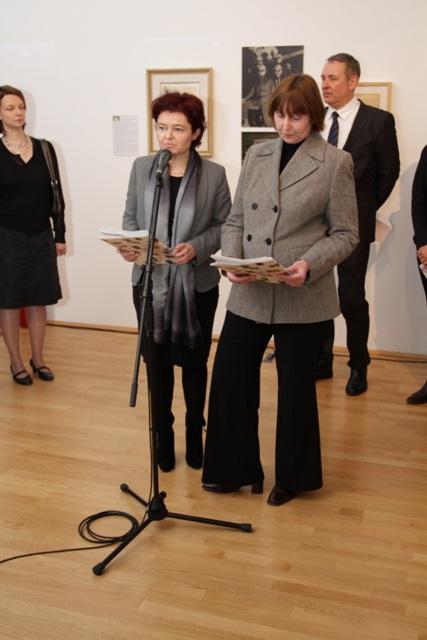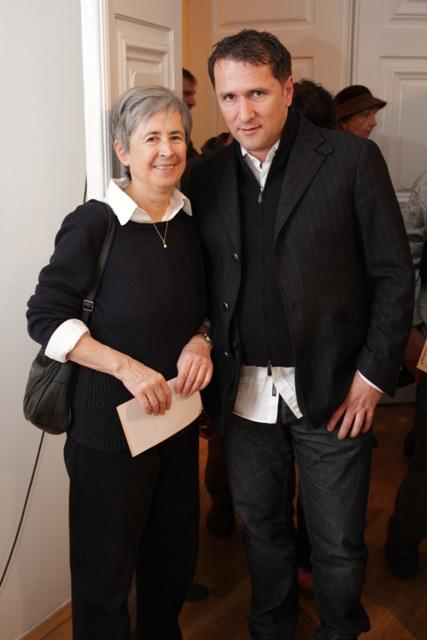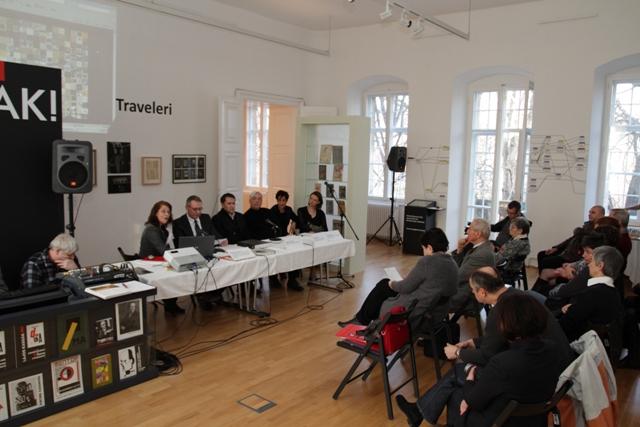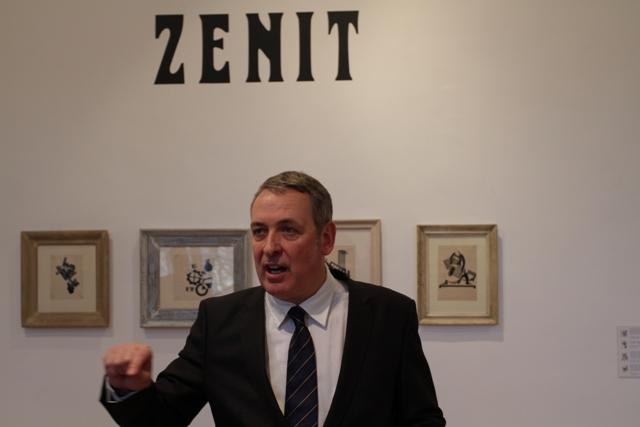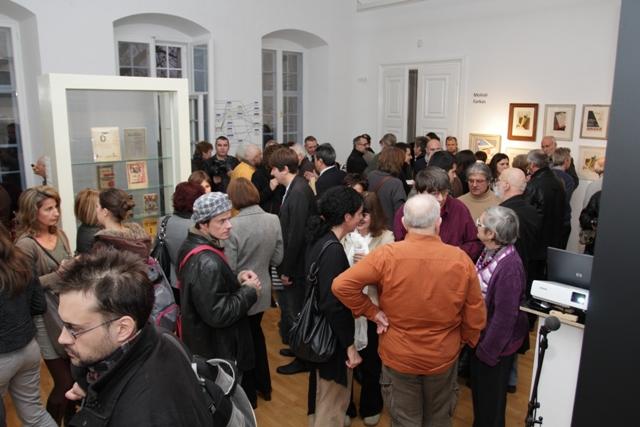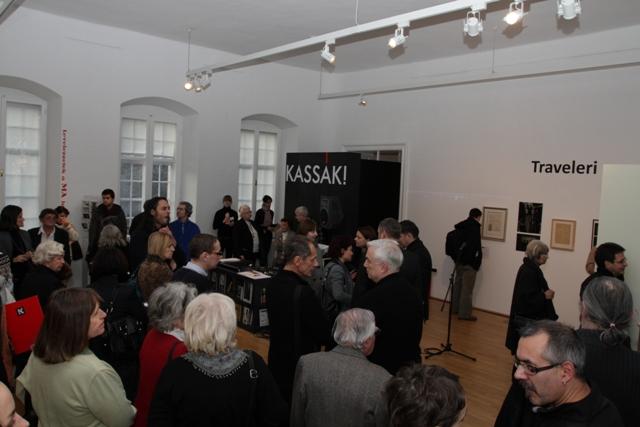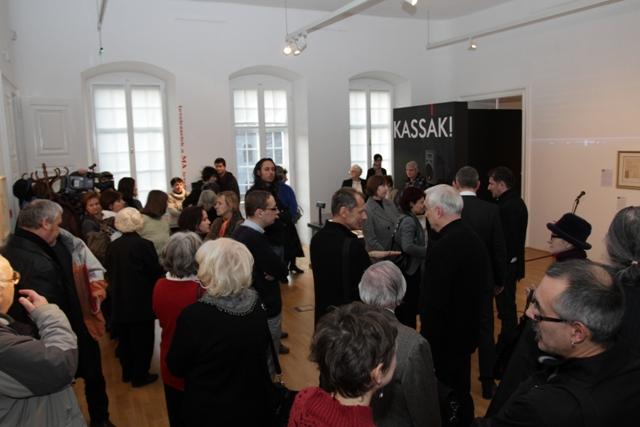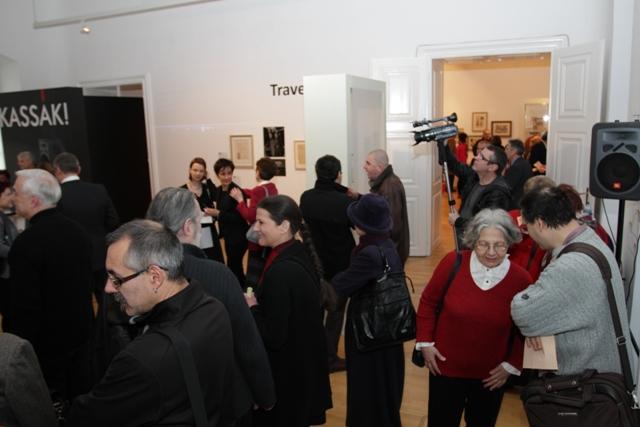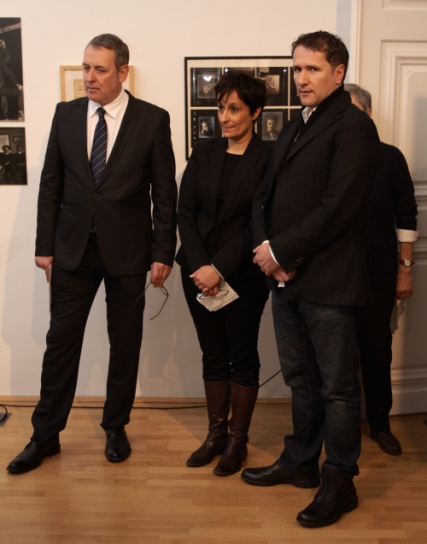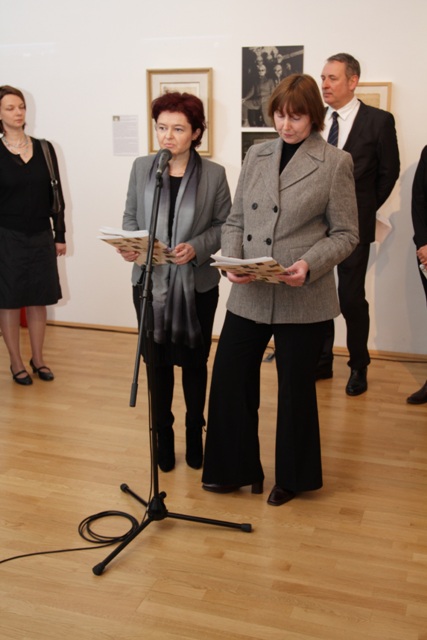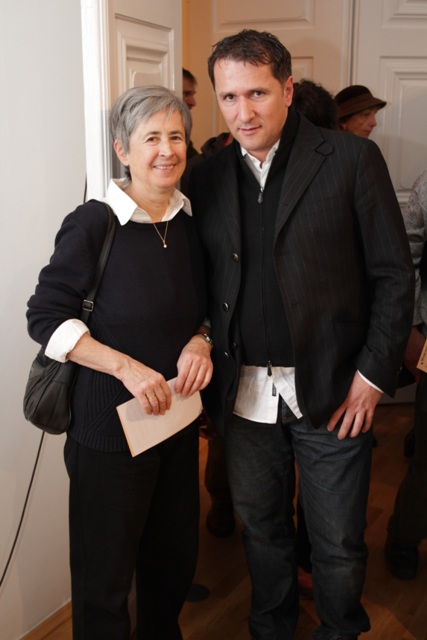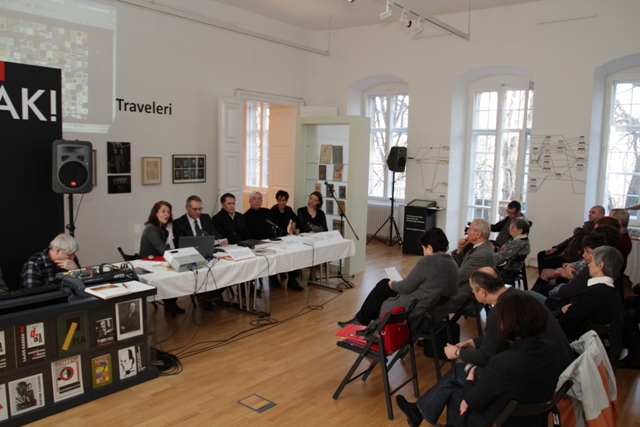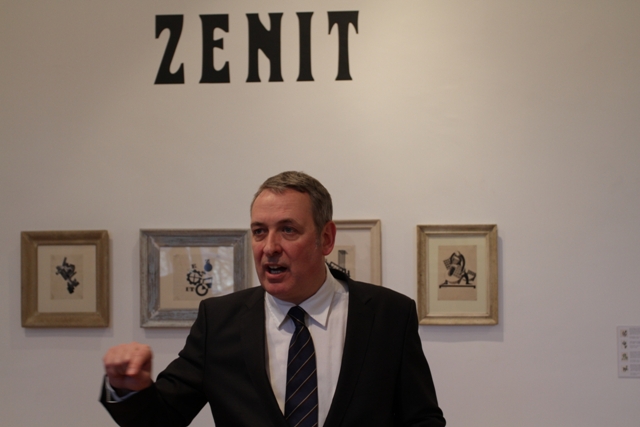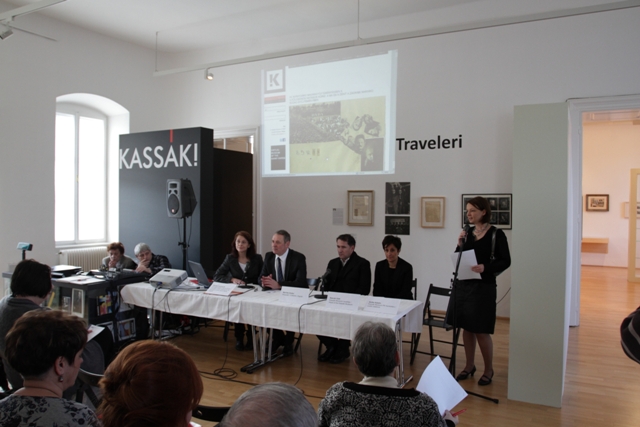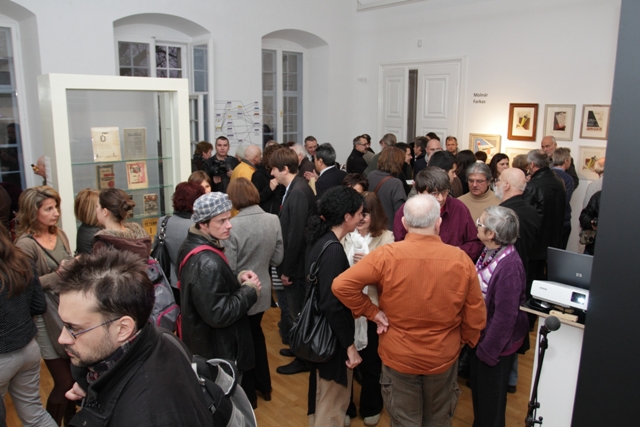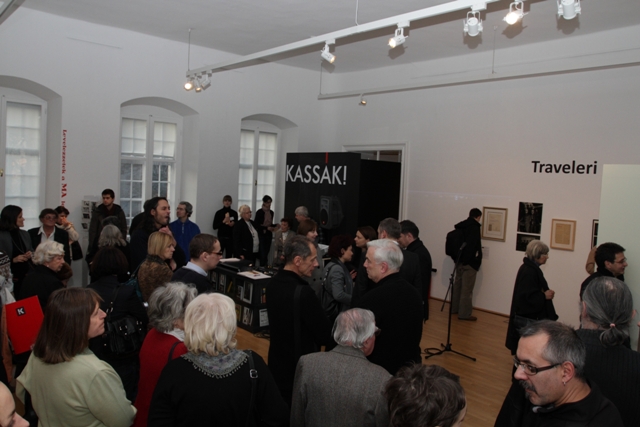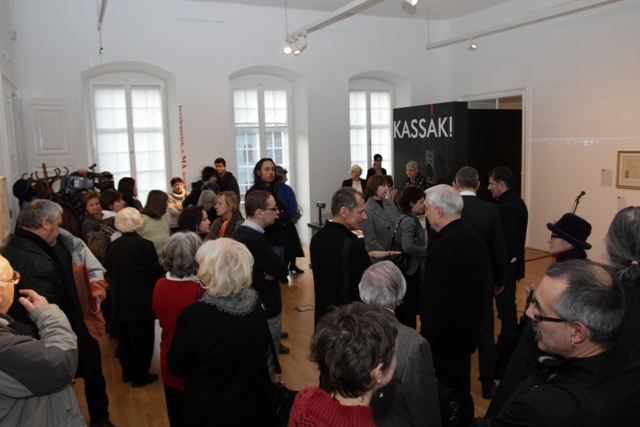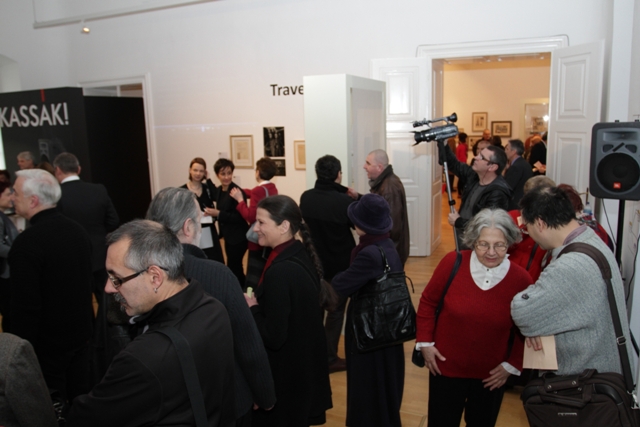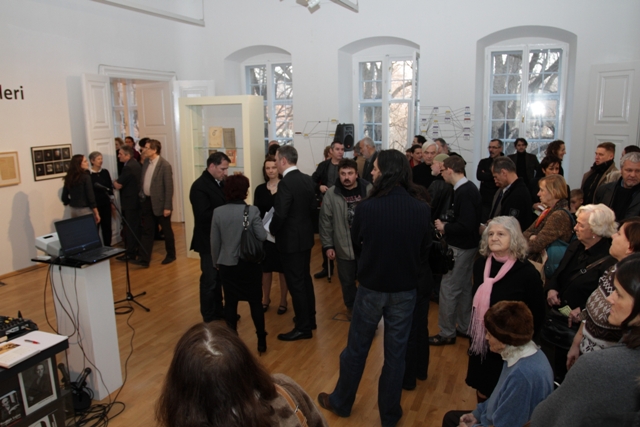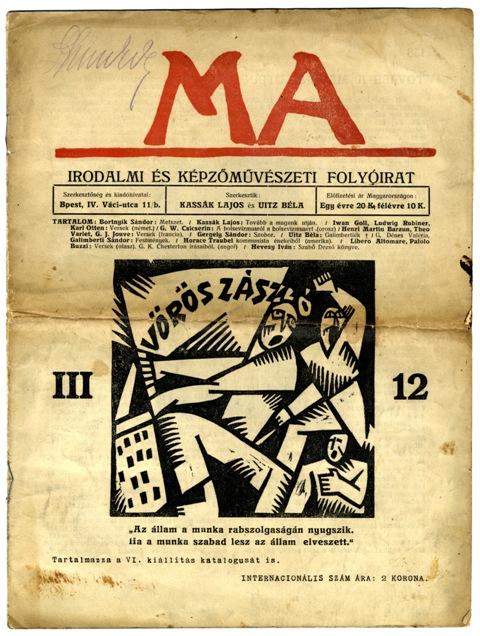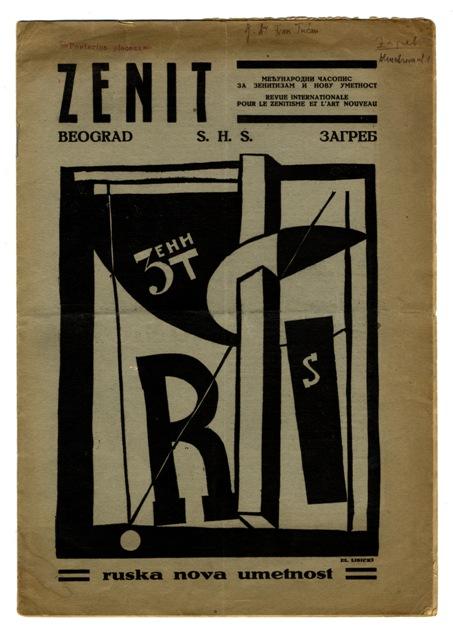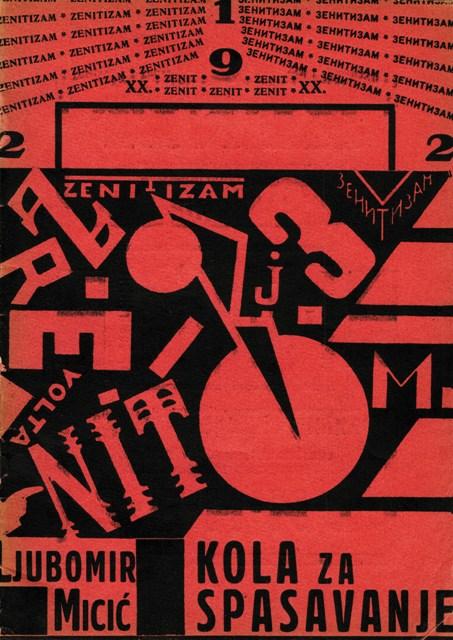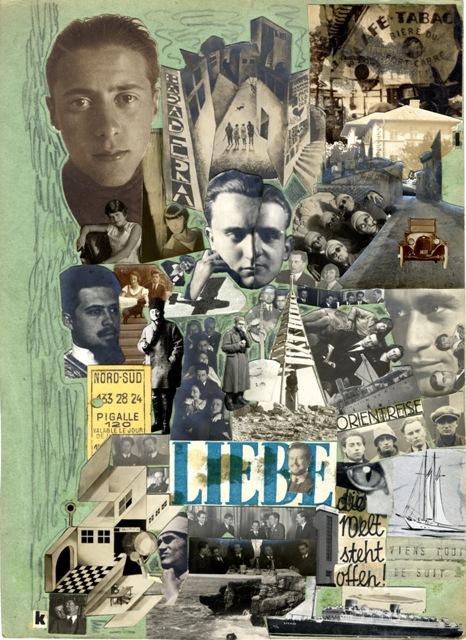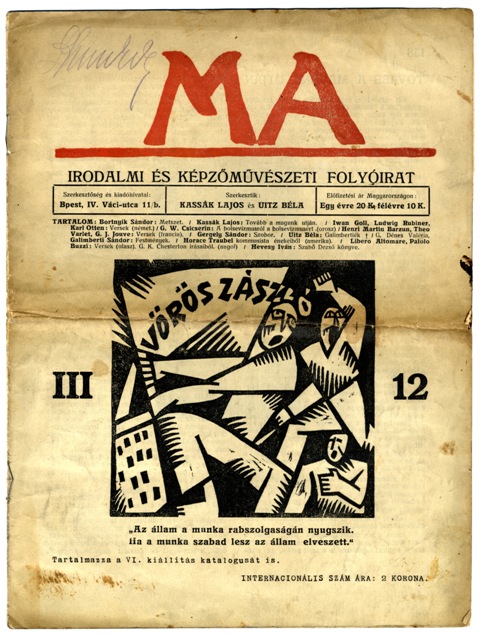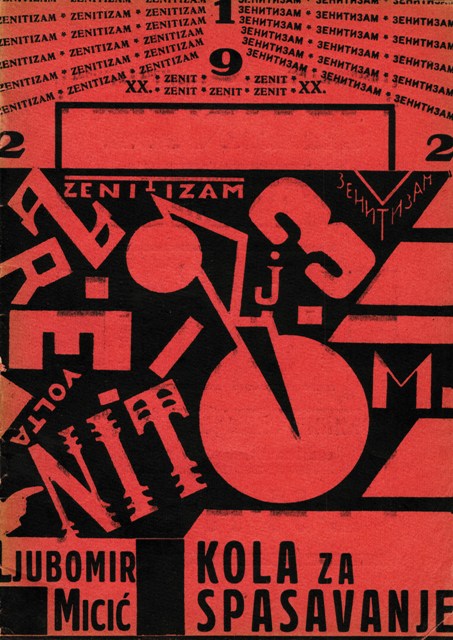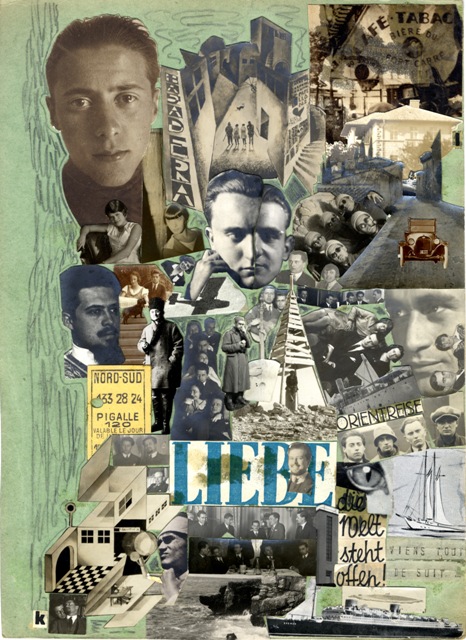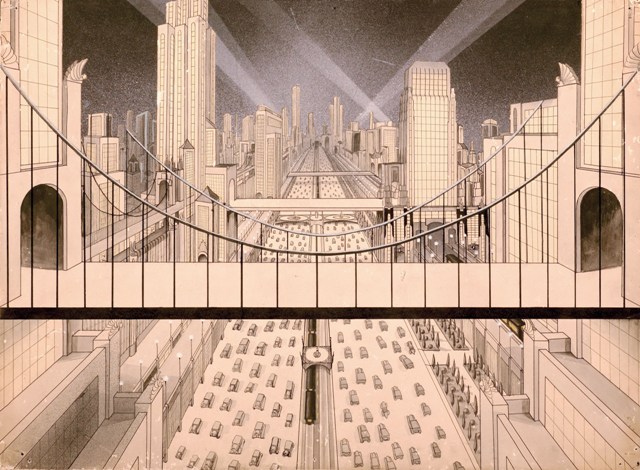Circles of Interference. The Marinko Sudac Collection
–
The Petőfi Literary Museum – Kassák Museum cordially invites you to the opening of its exhibition
The Avant-Garde in Private Collections II. Circles of Interference. The MA and the Zenit in the Marinko Sudac Collection, Zagreb
at 4 pm on 27 January 2012.
Venue: Kassák Museum
Welcome
Silvija Malnar, Counsellor, Embassy of the Republic of Croatia in Budapest
Csilla E. Csorba, General Director of the Petőfi Literary Museum
Opening speech
Branko Franceschi, President, Institute for the Research of the Avant-Garde, Zagreb
The patron of the exhibition is the Embassy of the Republic of Croatia in Budapest.
On display until 15 April 2012.
Open Wednesday – Sunday 10am – 5pm
Address: Kassák Museum 1033 Budapest, Fő tér 1., Zichy Castle | www.kassakmuzeum.hu
Supporters: NEFMI, PIM, Kassak Museum, Institute for the Research of the Avant-Garde - Zagreb, Embassy of the Republic of Croatia in Budapest
The exhibition Circles of Interference, a collaborative effort between Collection Marinko Sudac, Kassak Museum and Institute for the Research of the Avant-garde, is based on the exchange and cooperative work between the editors of the avant-garde periodicals MA and Zenit, two that were among the most influential in the region at the beginning of the 1920's. The exhibition covers the issues of networking and expansion of the avant-garde movement and the esthetic of Constructivism that, in between the two wars, had a strong and productive impact on the cultural life of the region. The artworks displayed and the documentation as a whole were selected from the permanent body of works from the Collection. The intention was to reveal the high artistic level of a neglected legacy of historical avant-garde movements to the public and critical eye and to place emphasis on the so far insufficiently recognized channels through witch radical artistic practice and esthetics of the constructivists has grown to become a decisive influence on the art practices from the second half of the 20th century.
Collection Marinko Sudac contains more than 20 000 artworks and documents which range from personal correspondence to video and film material; it is a sum of the collection’s strategy, started in 2004, with the idea of accumulating exclusively the works of artistic avant-garde from the territory of former Yugoslavia; or, rather, those art practices and cultural phenomena of the region and the world that were, from 1909 until 1989, connected to the avant-garde. During its relatively brief existence and activity, but boasting a dynamic and successful presentation of the historical avant-garde movements in the prestigious museum institutions, the Collection had proven itself as a key player toward the welcomed recognition of the historical avant-garde both within and outside of the region. It helped usher in a new pattern of exhibiting and publishing standards respectful of the proper presentation and popularizing of the avant-garde art. The projects that the Collection has been involved with so far, its collaboration with various museums since 2005, and since 2009 with the Institute for the Research of the Avant-garde, have often been noted as cultural events of a season and have generally elicited unprecedented interest in the media, while they went to break all attendance records.
Beside the preservation of the legacy of the historical avant-garde movements, the Collection's key mission remains the instigation, organization, publication and presentation of the research and study of various art practices and artists, particularly those that, even in the recent years, were often either forgotten or neglected. In order to successfully spread the results of its research, the Collection had started Edition Sudac —that specializes in publishing high-profile monographs of artists and cultural phenomena that, by their quality and scope, aim to excel over the standardized museum editions. All aspects of the Collection work are gathered in one place, at the Virtual Museum of the Avant-garde Art www.avantgarde-museum.com. The web-site concept and its scope are both novel in the field on the interactive Internet visual art presentation.
By understanding the power and continuity of the avant-garde art, that has by far and large emerged from the international network of its protagonists, the Collection had from he start attempted to expand its field of interest to the neighboring countries. Today it covers artists in the vast region bound by the Baltic Sea on the north and the Black sea on the south; it includes the collection of the Italian futurist manifestos, the avant-garde editions from the Western Europe, and even the pro-Marxist publications from Japan.
Due to particularly vigorous connections between the local and regional artists to their Hungarian counterparts, the Collection’s active research unit had managed to procure a great number of works from the Hungarian artists that now occupy a prominent place in the collection and in the projects that lay ahead. At the moment, the Collection curates works of the following artists: Déry Tibor, Farkas Molnár, Kassák Lajos, Bortnyik Sándor, Attalai Gábor, Haris László, Ficzek Ferenc, Kismányoky Károly, Pinczehelyi Sándor, Szijártó Kálmán, Halász Károly, Atilla Pálfalusi; and magazines 100%, MA and Munka.
The Avant-Garde in Private Collections II. Circles of Interference. The MA and the Zenit in the Marinko Sudac Collection, Zagreb
at 4 pm on 27 January 2012.
Venue: Kassák Museum
Welcome
Silvija Malnar, Counsellor, Embassy of the Republic of Croatia in Budapest
Csilla E. Csorba, General Director of the Petőfi Literary Museum
Opening speech
Branko Franceschi, President, Institute for the Research of the Avant-Garde, Zagreb
The patron of the exhibition is the Embassy of the Republic of Croatia in Budapest.
On display until 15 April 2012.
Open Wednesday – Sunday 10am – 5pm
Address: Kassák Museum 1033 Budapest, Fő tér 1., Zichy Castle | www.kassakmuzeum.hu
Supporters: NEFMI, PIM, Kassak Museum, Institute for the Research of the Avant-Garde - Zagreb, Embassy of the Republic of Croatia in Budapest
The exhibition Circles of Interference, a collaborative effort between Collection Marinko Sudac, Kassak Museum and Institute for the Research of the Avant-garde, is based on the exchange and cooperative work between the editors of the avant-garde periodicals MA and Zenit, two that were among the most influential in the region at the beginning of the 1920's. The exhibition covers the issues of networking and expansion of the avant-garde movement and the esthetic of Constructivism that, in between the two wars, had a strong and productive impact on the cultural life of the region. The artworks displayed and the documentation as a whole were selected from the permanent body of works from the Collection. The intention was to reveal the high artistic level of a neglected legacy of historical avant-garde movements to the public and critical eye and to place emphasis on the so far insufficiently recognized channels through witch radical artistic practice and esthetics of the constructivists has grown to become a decisive influence on the art practices from the second half of the 20th century.
Collection Marinko Sudac contains more than 20 000 artworks and documents which range from personal correspondence to video and film material; it is a sum of the collection’s strategy, started in 2004, with the idea of accumulating exclusively the works of artistic avant-garde from the territory of former Yugoslavia; or, rather, those art practices and cultural phenomena of the region and the world that were, from 1909 until 1989, connected to the avant-garde. During its relatively brief existence and activity, but boasting a dynamic and successful presentation of the historical avant-garde movements in the prestigious museum institutions, the Collection had proven itself as a key player toward the welcomed recognition of the historical avant-garde both within and outside of the region. It helped usher in a new pattern of exhibiting and publishing standards respectful of the proper presentation and popularizing of the avant-garde art. The projects that the Collection has been involved with so far, its collaboration with various museums since 2005, and since 2009 with the Institute for the Research of the Avant-garde, have often been noted as cultural events of a season and have generally elicited unprecedented interest in the media, while they went to break all attendance records.
Beside the preservation of the legacy of the historical avant-garde movements, the Collection's key mission remains the instigation, organization, publication and presentation of the research and study of various art practices and artists, particularly those that, even in the recent years, were often either forgotten or neglected. In order to successfully spread the results of its research, the Collection had started Edition Sudac —that specializes in publishing high-profile monographs of artists and cultural phenomena that, by their quality and scope, aim to excel over the standardized museum editions. All aspects of the Collection work are gathered in one place, at the Virtual Museum of the Avant-garde Art www.avantgarde-museum.com. The web-site concept and its scope are both novel in the field on the interactive Internet visual art presentation.
By understanding the power and continuity of the avant-garde art, that has by far and large emerged from the international network of its protagonists, the Collection had from he start attempted to expand its field of interest to the neighboring countries. Today it covers artists in the vast region bound by the Baltic Sea on the north and the Black sea on the south; it includes the collection of the Italian futurist manifestos, the avant-garde editions from the Western Europe, and even the pro-Marxist publications from Japan.
Due to particularly vigorous connections between the local and regional artists to their Hungarian counterparts, the Collection’s active research unit had managed to procure a great number of works from the Hungarian artists that now occupy a prominent place in the collection and in the projects that lay ahead. At the moment, the Collection curates works of the following artists: Déry Tibor, Farkas Molnár, Kassák Lajos, Bortnyik Sándor, Attalai Gábor, Haris László, Ficzek Ferenc, Kismányoky Károly, Pinczehelyi Sándor, Szijártó Kálmán, Halász Károly, Atilla Pálfalusi; and magazines 100%, MA and Munka.

